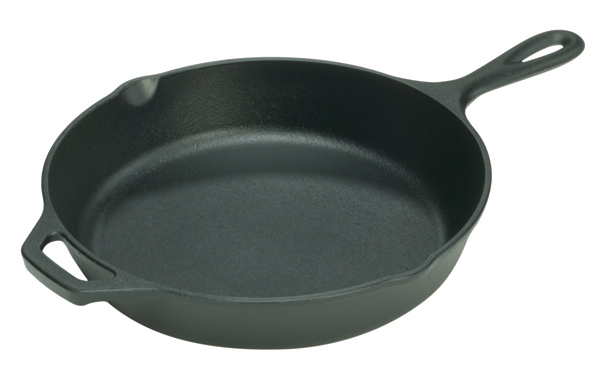How to season cast iron pans
We're big fans of cast iron cookware, but it does take a little more maintenance than some other materials. Most importantly you need to season cast iron. Seasoning simply means a patina of carbon which not only protects the pan from rust (which exposed iron will do rapidly), but also gives cast iron a natural non-stick finish. Many pans come pre-seasoned these days, but if you need to re-season or refurbish a rusted pan here's how to do it.

About the only way to destroy a cast iron piece is to crack it, which becomes a possibility with quick temperature changes. This is more common in older pans, but can happen to any piece. Don't place a very hot pan into cold water and you should be fine.
Refurbishing a rusted cast iron pan
Rusted pans can easily be brought back to life. Check out the photos below, we let a pan rust just so we can show you how to bring it back to life. Antique cast iron is easy to find, so keep in mind this technique next time you see an otherwise beautiful piece that has rusted.
- Wash the rusted pan with hot soapy water, this is one of the few times you want to wash cast iron with soap but since we'll be re-seasoning you have nothing to worry about
- Sand the rust off, we used steel wool and Bar Keeper's Friend. Steel wool comes in grades, we used grade #0 which was recommended on the package for scouring pans. It's pretty fine which is what we wanted--no scratches were left in the pan after the rust was gone.
- Proceed to seasoning
Seasoning cast iron
- Pre-heat oven to 350 ºF (175 ºC)
- Wash the pan in hot soapy water, you want it to be clean before proceeding
- Dry the pan off as best you can and place in the oven for several minutes to completely dry. The fat needs to soak into the iron and it must be completely dry for this to work best (oil and water don't mix!)
- Place approximately a tablespoon of vegetable shortening into the pan, close oven door and wait until the fat melts.
- Remove the pan and apply a thin layer of the fat to all sides of the pan using paper towels and kitchen tongs. You don't want a pool of fat remaining in the bottom of the pan when you're done, if there's extra simply remove it.
- Place fat-coated pan in the oven and bake for an hour. After the hour is over, turn the oven off and let the pan cool inside the oven.
At this point you have a seasoned pan that should have darkened significantly in color. If you properly care for your pan this seasoning layer will only improve and the darkening will continue.
Notes
- If you don't have any shortening you can use a liquid fat such as vegetable oil, but we've had problems with those becoming sticky. Lard is also a good choice if you'd like to stay all natural.


